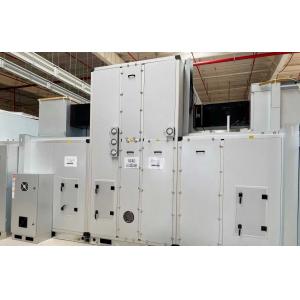

Add to Cart
1. Structure of the Rotary Dehumidifier:
Desiccant Wheel (Rotor): The core component is a large, porous
wheel made from a desiccant material (like silica gel or zeolite)
that absorbs moisture from the air. The wheel is divided into two
sections: the process air section and the reactivation air section.
Air Inlet and Outlet: The device has separate air channels for the
process air (the air that needs to be dehumidified) and the
reactivation air (air used to regenerate the desiccant).
Blowers/Fans: These move the air through the system, one for the
process air and one for the reactivation air.
Heater: Often, a heater is used to warm the reactivation air to
regenerate the desiccant material by releasing the absorbed
moisture.
2. Process Air Dehumidification:
Air Intake: Moist air from the environment is drawn into the rotary
dehumidifier through the process air inlet.
Moisture Absorption: As the moist air passes through the process
section of the rotating desiccant wheel, the desiccant material
absorbs the moisture from the air, resulting in dry air being
discharged from the process air outlet.
Continuous Operation: The wheel rotates slowly (typically 8-12
revolutions per hour), so a different portion of the wheel is
constantly in contact with the incoming moist air, allowing
continuous dehumidification.
Applications:
* Industry, Scientific Research, Electric Power Transportation
* Lithium Battery Industry, Biotechnology Pharmaceutical Industry
* Chemical, Daily Chemical Industry, Food Beverage Industry
* Safety Glazing Material Industry, Tyre and Rubber Industry
* Medical Instrument, Vegetables Frozen, Precise Instrument
* Wood Goods, Shipbuilding Painting Industry, Kinds of Storage
Lead time
| Quantity (units) | 1 - 1 | > 1 |
| Lead time (days) | 35 | To be negotiated |
